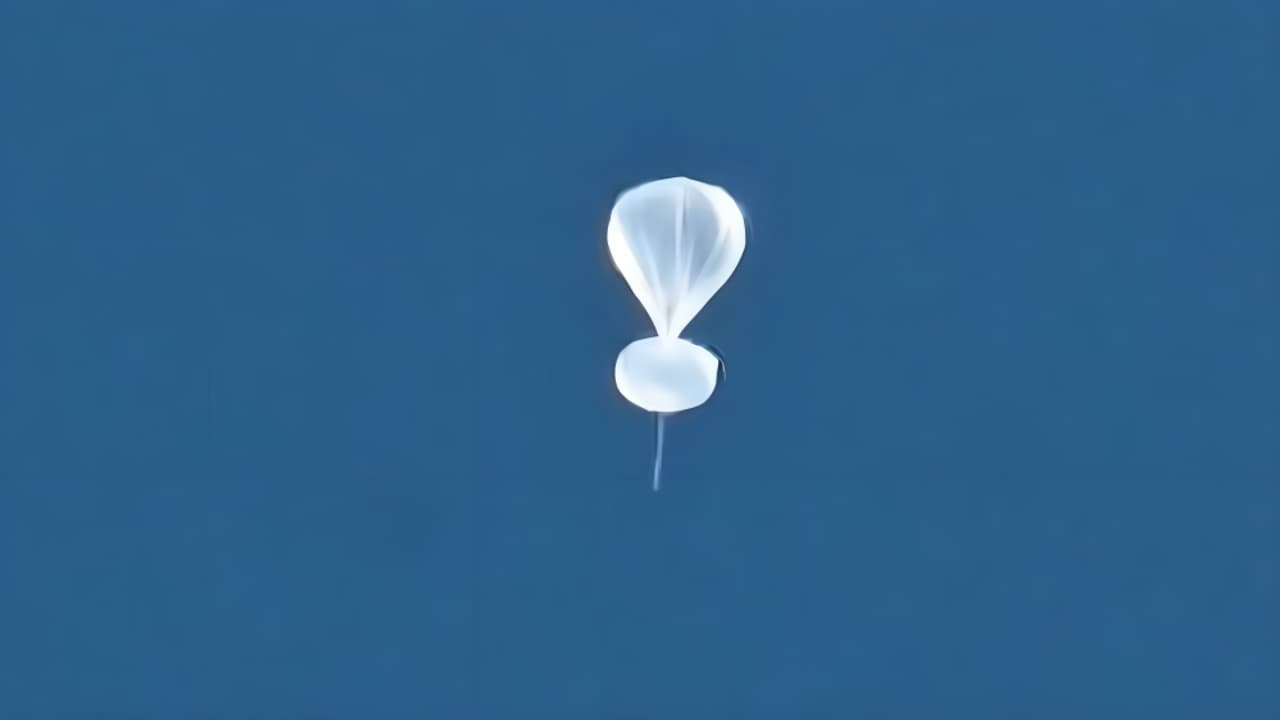High-altitude white balloons have been sighted drifting over states including Alabama, Colorado and Arizona, prompting fears of foreign surveillance. Some have later been traced to U.S. military or aerospace firms.
In recent weeks, citizens in Arizona, Colorado and Alabama have reported eerie sightings of white objects floating silently at extreme altitudes. These balloons hover well above commercial air traffic, sparking speculation about espionage and government secrecy, according to a report in Daily Mail.
Some local observers quickly likened the sightings to the much-publicised Chinese spy balloon incident of 2023. In that earlier case, a high-altitude balloon crossed the US continental airspace and was eventually shot down off the coast of South Carolina.
In Alabama, veteran meteorologist James Spann tweeted reports of a balloon (indicated as ‘HBAL787’) drifting over northeast Alabama at around 59,200 feet. That altitude places it far above typical airliner routes, reinforcing worries about the object’s purpose and origin.
Scroll to load tweet…
Claims of ownership and official identifications
In response, Aerostar, a firm known for manufacturing balloons used in research, telecommunications and defence sectors, confirmed that several of the recently sighted objects were under its control.
Meteorologists in the region also attributed at least one balloon over Alabama to Aerostar. Meanwhile, in Tucson, Arizona, one object initially suspected to be a spy platform was later identified as a US military test balloon.
Such disclosures provide some reassurance that not all sightings are sinister, yet they also raise fresh transparency questions about how much the public and even local authorities can know.
Historical and technical context
The notion of using high-altitude balloons for surveillance is not new. During the Cold War, the US and Soviet bloc both experimented with ‘spy balloons’ to carry cameras and signals intercept equipment across borders.
In the 2023 Chinese balloon case, US officials claimed the device carried antennas and sensors capable of intercepting communications, and that much of its equipment was manufactured in the US. The balloon was downed only after intense diplomatic and military deliberation.
Scroll to load tweet…
Scroll to load tweet…
A more recent example: in February 2024, NORAD intercepted a small balloon over Utah at altitudes between 43,000 and 45,000 feet. Officials determined it was not maneuverable and posed no immediate threat to aviation or security.
These earlier events highlight the difficulty of distinguishing between benign scientific balloons and devices deployed for intelligence collection.
Expert views and public concerns
Security analysts warn that modern surveillance balloons can be stealthy: lacking engines, having low radar signatures, and carrying power from solar panels or lightweight batteries. Some may carry cameras, signal interception gear or communications relays.
Yet many scientists emphasise that balloons are also widely used for atmospheric research, climate monitoring, telecommunications testing and other peaceful applications. The line between benign and threatening can be blurry.
Still, for communities under them, the sudden appearance of ghostly blobs in the sky rekindles fears of national sovereignty violations, foreign spying, or government secrecy. Local residents and state officials have demanded more timely disclosure from federal agencies about balloon paths, payloads and mission purposes.
Tracking, transparency and policy
To ease tensions, authorities are likely to expand real-time tracking, require clearer registration of high-altitude devices and improve public notice when objects enter US airspace.
Some in Congress may push for a national ‘balloon transparency act’ or stricter controls over commercial balloon launches. There’s also pressure for the Pentagon and FAA to develop better guidelines distinguishing scientific flights from potential intelligence threats.
Diplomatic fault lines may resurface if foreign countries are implicated. The 2023 balloon incident had already strained US-China relations and raised debate over the use of ubiquitous commercial technology in military or intelligence systems.
Meanwhile, for residents who glimpse mysterious shapes overhead, the skies have regained an unsettling aura, reminders that even in peacetime, surveillance and secrecy hover just out of view.
Alternate headline
“High-Altitude Mystery: Balloons Over U.S. States Reignite Spy Fears”
